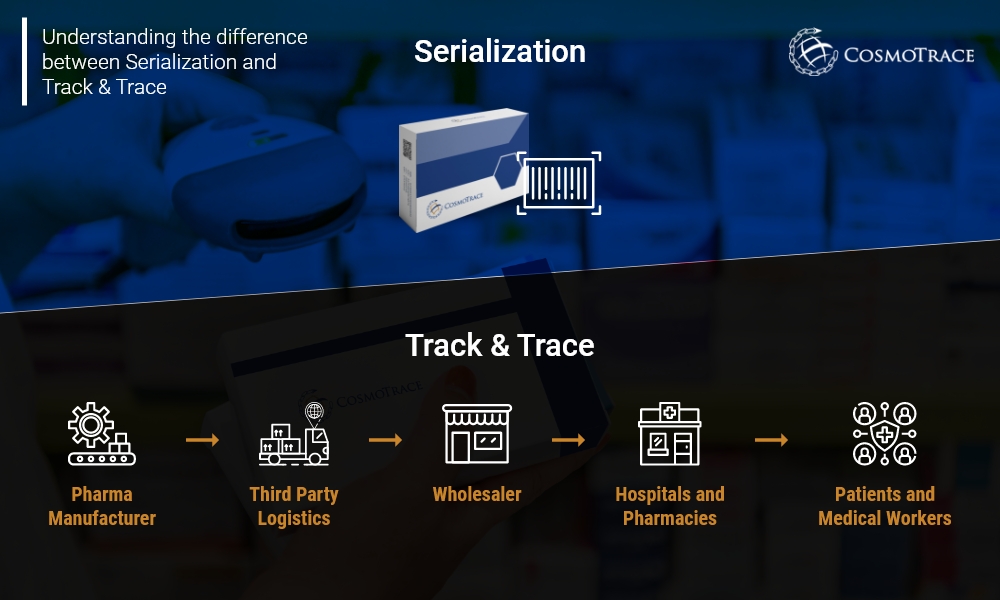Serialization and track-and-trace technologies play a crucial role in ensuring patient safety and combating counterfeit drugs in the pharmaceutical industry. With the increasing global demand for quality medications, an efficient and reliable serialization and track-and-trace system is essential for pharmaceutical machinery. This article explores the importance of implementing serialization and track-and-trace technologies in pharmaceutical machinery and highlights the benefits they offer to manufacturers and consumers alike.
1. The Importance of Serialization in the Pharmaceutical Industry
Serialization plays a crucial role in ensuring the safety and integrity of pharmaceutical products. As a pharmacist, I understand the significance of implementing serialization processes throughout the supply chain. By assigning a unique serial number to each product, we are able to track its journey from manufacturing to distribution and, ultimately, to the consumer. This not only helps in preventing counterfeit drugs from entering the market but also allows us to detect any potential quality issues or product recalls quickly. Serialization also aids in enhancing patient safety by providing accurate information regarding the origin and authenticity of the medicine. Overall, serialization is a vital tool in the pharmaceutical industry, ensuring the well-being of patients and maintaining the industry’s reputation.
2. Understanding Track-and-Trace Technology in Pharma Machinery

Track-and-trace technology is becoming increasingly important in the pharmaceutical industry. As a pharmaceutical professional, I understand the significance of this technology in ensuring the safety and integrity of our products. With the rise in counterfeit drugs and the need for accurate traceability, track-and-trace technology allows us to monitor and track the movement of pharmaceutical products throughout the supply chain. This technology enables us to authenticate the origin of our products and identify any potential breaches in the supply chain, ensuring that only safe and genuine products reach the patients. It also helps in enhancing patient safety by enabling timely recalls in case of any issues or quality concerns. By utilizing track-and-trace technology in our pharma machinery, we can establish a robust system that brings transparency, efficiency, and security to the pharmaceutical industry.
3. Implementing Serialization and Track-and-Trace Systems in Pharma Machinery
In my experience as a pharmaceutical industry professional, implementing serialization and track-and-trace systems in pharma machinery has been crucial in ensuring product safety and combating counterfeit drugs. Serialization involves assigning a unique serial number to each individual product, enabling its identification throughout the supply chain. This, in turn, allows for effective tracking and tracing of the product’s journey, from manufacturing to distribution. Such systems help to eliminate the risk of counterfeit drugs entering the market, as any product without a valid serial number can be identified as potentially fake. Additionally, serialization and track-and-trace systems provide greater visibility and control over the supply chain, making it easier to recall or authenticate products if necessary. Overall, the implementation of these systems is a proactive step towards ensuring patient safety and maintaining the integrity of the pharmaceutical industry.
4. The Benefits of Serialization and Track-and-Trace in Pharma Machinery
Serialization and track-and-trace in pharmaceutical machinery bring numerous benefits to both manufacturers and consumers. As a manufacturer, implementing serialization and track-and-trace systems enables us to ensure the integrity and authenticity of our products. We can track the movement of each unique serial number throughout the supply chain, from production to distribution, which helps to prevent counterfeiting and diversion of our products. This not only protects our brand reputation but also safeguards the health and wellbeing of consumers. Furthermore, serialization and track-and-trace systems allow us to streamline our operations and improve efficiency. We can easily identify any potential bottlenecks or issues in the production process, allowing for timely intervention and resolution. These systems also enhance overall supply chain visibility, enabling us to better manage inventory levels and reduce waste. Ultimately, serialization and track-and-trace in pharmaceutical machinery offer significant advantages that contribute to a safer and more efficient industry.
5. Compliance and Regulatory Considerations for Serialization and Track-and-Trace in Pharma Machinery
Compliance and regulatory considerations for serialization and track-and-trace in pharma machinery are of utmost importance for the pharmaceutical industry. As a pharma machinery manufacturer, I understand the criticality of adhering to the stringent regulations and guidelines laid down by regulatory bodies. Serialization and track-and-trace are essential processes that ensure the authenticity and safety of pharmaceutical products throughout the supply chain. From labeling requirements to data management, every aspect needs to be carefully evaluated and implemented to meet the compliance standards. By complying with these regulations, pharmaceutical manufacturers can enhance transparency, prevent counterfeiting, and safeguard the health of consumers. As a responsible industry professional, I am committed to ensuring that our pharma machinery meets all the necessary compliance and regulatory requirements for serialization and track-and-trace.
6. Overcoming Challenges in Implementing Serialization and Track-and-Trace in Pharma Machinery
Implementing serialization and track-and-trace in pharma machinery has never been an easy task. As the industry continues to evolve and face new challenges, it is crucial for us to find innovative solutions to ensure the safety and integrity of pharmaceutical products. From my experience, one of the biggest challenges has been the integration of serialization technology into existing machinery. It requires close collaboration between engineers and software developers to ensure a seamless transition. Additionally, meeting regulatory requirements and complying with international standards adds another layer of complexity. Despite these challenges, we remain committed to overcoming them and making sure that our machinery is fully equipped to handle serialization and track-and-trace processes efficiently.
Conclusion
In conclusion, serialization and track-and-trace technology have become crucial in the pharma industry for ensuring the safety and authenticity of medicines. These technologies not only help combat counterfeit drugs but also enhance supply chain visibility and efficiency. As regulatory requirements continue to increase, it is important for pharmaceutical companies to invest in robust serialization and track-and-trace systems to comply with regulations and protect public health.
1. What is serialization in pharma machinery?
Serialization refers to the process of assigning a unique serial number to individual units of pharmaceutical products in order to ensure their traceability throughout the supply chain.
2. Why is serialization important in the pharmaceutical industry?
Serialization is important in the pharmaceutical industry as it helps prevent counterfeit drugs from entering the market and ensures patient safety by allowing traceability of each product from manufacturing to dispensing.
3. What is track-and-trace in pharma machinery?
Track-and-trace refers to the ability to monitor and trace pharmaceutical products as they move through the supply chain, providing real-time visibility and accountability at each stage of the process.
4. How does serialization and track-and-trace benefit pharmaceutical manufacturers?
Serialization and track-and-trace systems enable pharmaceutical manufacturers to comply with regulatory requirements, reduce the risk of counterfeit products, improve supply chain efficiency, and enhance patient safety by allowing rapid recall of defective or expired products.
5. What technologies are used for serialization and track-and-trace in pharma machinery?
Technologies commonly used for serialization and track-and-trace in pharma machinery include barcode scanning, RFID (Radio Frequency Identification), vision inspection systems, and cloud-based software platforms.
6. How can serialization and track-and-trace be integrated into existing pharmaceutical machinery?
Serialization and track-and-trace systems can be integrated into existing pharmaceutical machinery through the installation of specialized modules, sensors, and software interfaces that enable data capture, aggregation, and communication with the central track-and-trace system.

